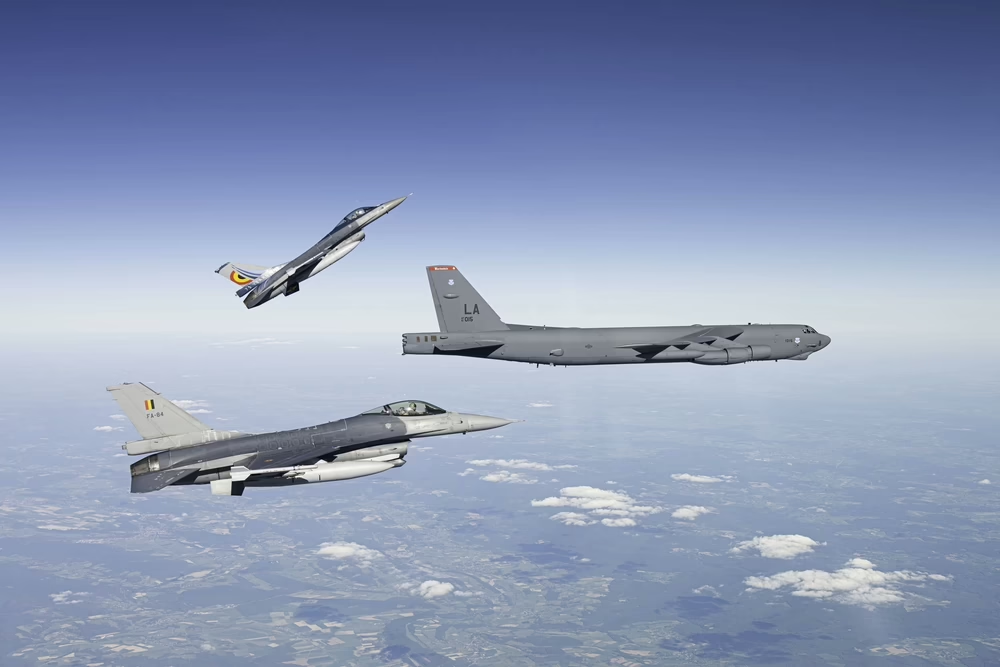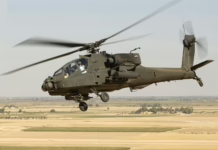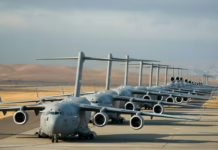With Russia’s ongoing war in Ukraine and growing concern about global threats, NATO allies boosted collective defense spending by $120 billion in 2024, while Secretary General Mark Rutte calls for European members to make a “quantum leap” in their military commitments.
NATO’s 32 member nations increased their collective defense spending to approximately $1.3 trillion in 2024, with the United States contributing nearly two-thirds of the total funding despite accounting for just over half of the alliance’s combined economic output.
In NATO’s annual report released Wednesday, Secretary General Mark Rutte detailed how European members and Canada invested $486 billion in defense last year — marking a 19.4% increase in real terms — while urging these allies to dramatically accelerate their commitments in 2025.
“We need to significantly increase our efforts to ensure NATO remains a key source of military advantage for all our nations. Our continued freedom and prosperity depend on it,” Rutte said in the report.
The U.S. contribution of $818 billion represented 64% of the alliance’s total defense spending, substantially exceeding America’s 53% share of the members’ combined gross domestic product, according to NATO calculations based on 2021 prices and exchange rates.
Twenty-two of NATO’s 32 members met the alliance’s guideline of spending at least 2% of their GDP on defense in 2024 — a dramatic improvement from 2014 when only three nations reached that benchmark. Poland led all members with an estimated 4.07% of GDP devoted to defense, while the U.S. and the Baltic states of Estonia, Latvia and Lithuania all exceeded 3%.
Nine countries failed to meet the 2% threshold, with Spain ranking lowest at 1.24%, followed by Canada at 1.45% and Italy at 1.5%. Iceland, which has no armed forces, is excluded from the spending assessment.
NATO’s newest members, Finland and Sweden, both surpassed the minimum spending target with 2.3% and 2.25% of GDP respectively. Sweden recently announced plans to further increase its defense budget to 3.5% of GDP by 2030.
The alliance also made progress on its goal of having members allocate at least 20% of defense expenditure to major equipment capabilities, including procurement and research and development. Twenty-eight members met this target in 2024, compared to just seven a decade ago. Only Portugal (19.5%), Canada (17.8%) and Belgium (15.2%) fell short.
“As defence budgets continue to grow, our transatlantic industry must keep pace,” Rutte said. “Our adversaries and competitors have been gearing up their militaries for competition, coercion and, potentially, conflict. We must bolster our defence industrial capacity to meet this challenge and preserve peace.”
The report highlighted the alliance’s continuing support for Ukraine, with members committing over $55 billion in military assistance to help Kyiv defend against Russia’s invasion. European allies and Canada provided 60% of this aid.
Rutte, who succeeded Jens Stoltenberg as NATO’s top official last October, emphasized the urgency of the current security situation, describing it as “the most dangerous security environment in generations.” He specifically pointed to the “growing strategic alignment and practical co-operation between Russia, the People’s Republic of China, Iran and Democratic People’s Republic of Korea” as a significant concern.

Key Takeaways
- NATO’s collective defense spending reached $1.3 trillion in 2024, with a $120 billion increase from the previous year.
- The U.S. continues to provide the largest share at $818 billion (64% of total spending).
- Twenty-two of 32 NATO members now meet the 2% of GDP defense spending guideline.
- Poland leads all allies in percentage terms at 4.07% of GDP.
- NATO Secretary General Mark Rutte is calling for significantly increased European defense investment in 2025.







